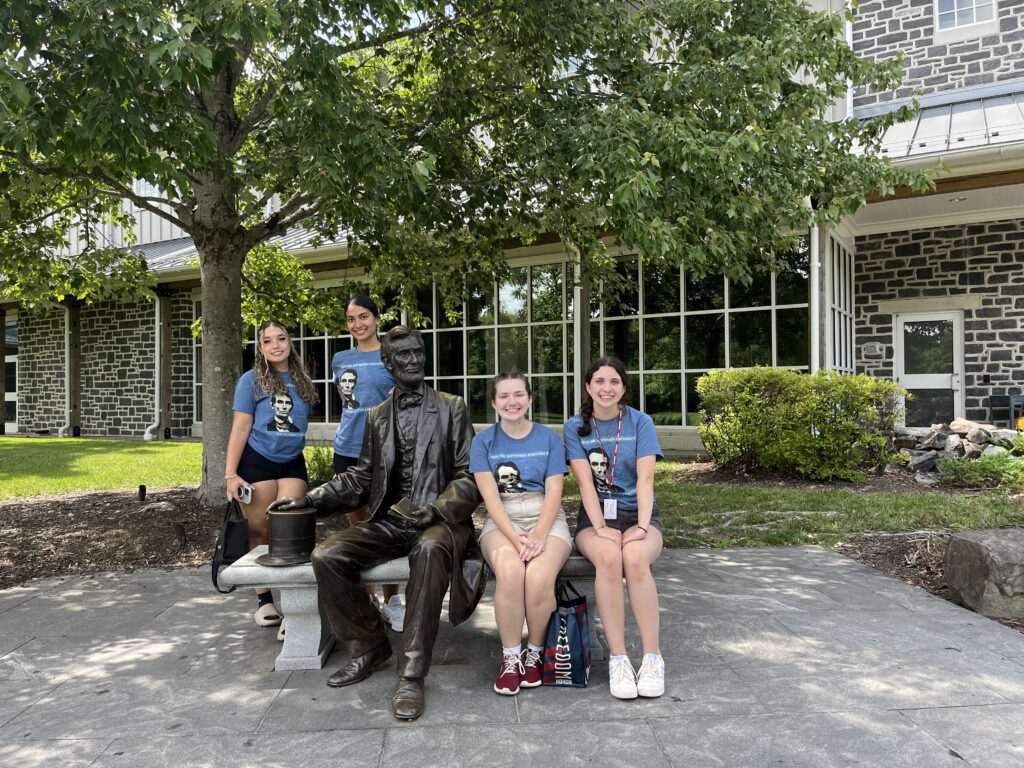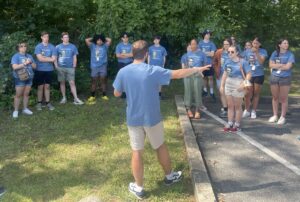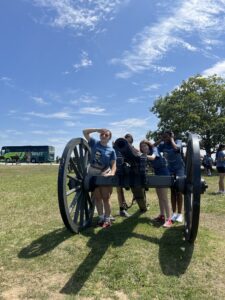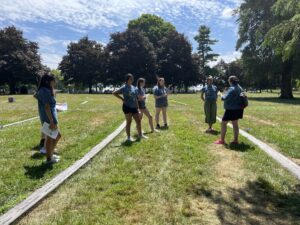On Saturday the students traveled to their first non-local field trip. The cohort left campus bright and early to arrive at the Gettysburg National Military Park at around 10:00. Once they got off the bus they were met with blue skies and green fields.
The day before the students had read Lincoln’s House Divided speech (1858) and First Inaugural (1861). Once they got to the battlefield students used the two documents to situate themselves in the Battle of Gettysburg. Students then applied their close reading skills by making astute observations about the geography of the battlefield, specifically how the picturesque landscape was deceptive, and the way it shaped the events of the battle. Some of them even recreated scenes of the battle behind the cannon carriages. Later that day students also viewed a cyclorama of the battlefield at the Gettysburg Visitor’s Center which reinforced the information that they learned on the battlefield.
Walking through the battlefield the students were surrounded by monuments. One particular monument, dedicated in 1917 by the state of Virginia, depicted Robert E. Lee perched on his horse with Confederate soldiers at the base. Professor Pinsker guided a group discussion on the difference between memorializing controversial figures in historical sites vs. public spaces. The students reasoned through the discussion like historians making apt observations and interpretations.
The students also traveled to the Soldiers’ National Cemetery. Before entering the cemetery, the students discussed the intended audience of Lincoln’s Gettysburg Address. Standing where Lincoln had stood 160 years ago to deliver his address, they used visual cues to investigate its meaning. Once inside they had the opportunity to engage with the legacies of the soldiers who had fought and died at Gettysburg. They learned about soldiers like Sgt. Philip Hamlin from TA Lindsay Bowman. One student was even able to locate one of her ancestors who was buried in the cemetery. All things considered, the visit deepened the student’s understanding of the text by allowing them to visually contextualize it.

Maelin, Sadiyah, Ava and Scarlette posing next to a statue of Abraham Lincoln at the Visitors Center.




Leave a Reply